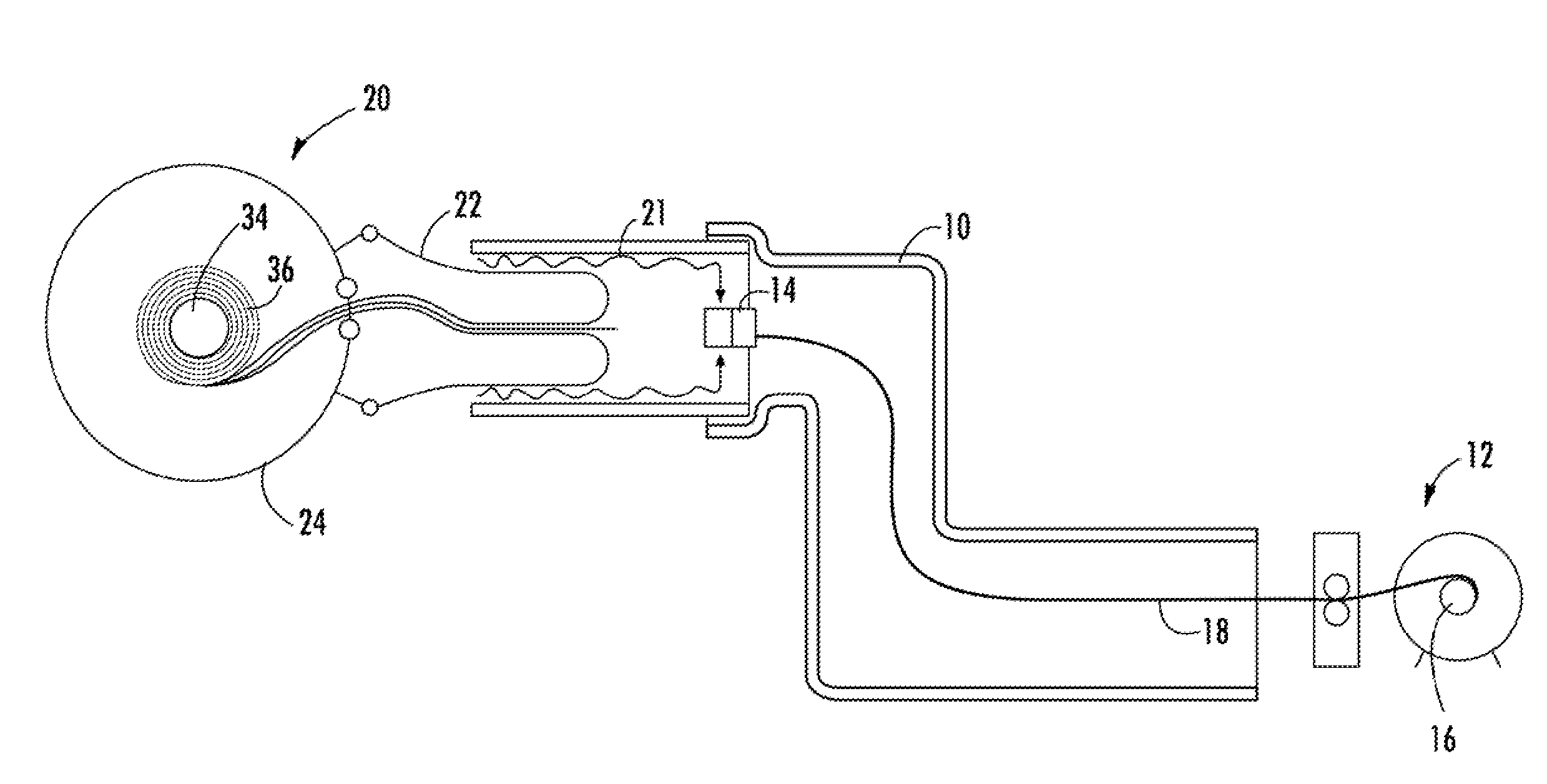Pressure infusion lining system
a technology of pressure infusion and lining system, which is applied in the direction of coatings, mechanical equipment, other domestic objects, etc., can solve the problems of pipeline deterioration, pipeline deterioration, holes, cracks, etc., and achieve the effect of effectively sealing all cracks and faults, sacrificing the integrity of sealing
- Summary
- Abstract
- Description
- Claims
- Application Information
AI Technical Summary
Benefits of technology
Problems solved by technology
Method used
Image
Examples
Embodiment Construction
[0025]Now referring to the drawings, the inversion lining system of the present invention is schematically depicted and generally illustrated in FIGS. 1 and 2. In most general terms a spincast epoxy coating machine 12 is set up at one end of the host pipe 10. The spincaster 14 is pulled through the host pipe 10 via winch 16 and cable 18, or by a rock bore machine. At the other end of the host pipe 10, a computer controlled inversion machine 20 is set up. The interior surface of the host pipe 10 is coated with wet uncured spray applied epoxy 21 at a set speed as the spincaster 14 is retrieved. The inversion machine 20 loaded with dry liner 22 inside the inversion bag 24 is inverted into the host pipe 10 and into the wet epoxy 21. The payout speed of the inversion liner 22 is computer controlled at a constant speed and internal pressure. The dry inversion liner 22 is forced through the wet epoxy at a controlled speed such that the slow rate of inversion prevents air from being trapped...
PUM
| Property | Measurement | Unit |
|---|---|---|
| internal pressure | aaaaa | aaaaa |
| flexural modulus | aaaaa | aaaaa |
| inversion pressure | aaaaa | aaaaa |
Abstract
Description
Claims
Application Information
 Login to View More
Login to View More - R&D
- Intellectual Property
- Life Sciences
- Materials
- Tech Scout
- Unparalleled Data Quality
- Higher Quality Content
- 60% Fewer Hallucinations
Browse by: Latest US Patents, China's latest patents, Technical Efficacy Thesaurus, Application Domain, Technology Topic, Popular Technical Reports.
© 2025 PatSnap. All rights reserved.Legal|Privacy policy|Modern Slavery Act Transparency Statement|Sitemap|About US| Contact US: help@patsnap.com



